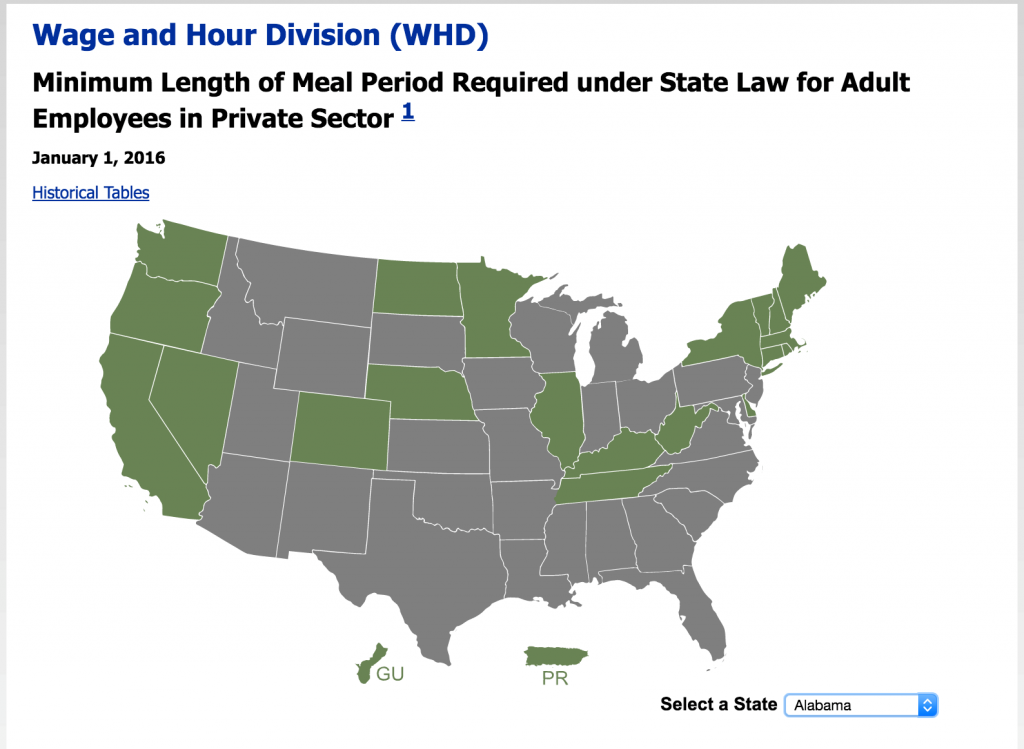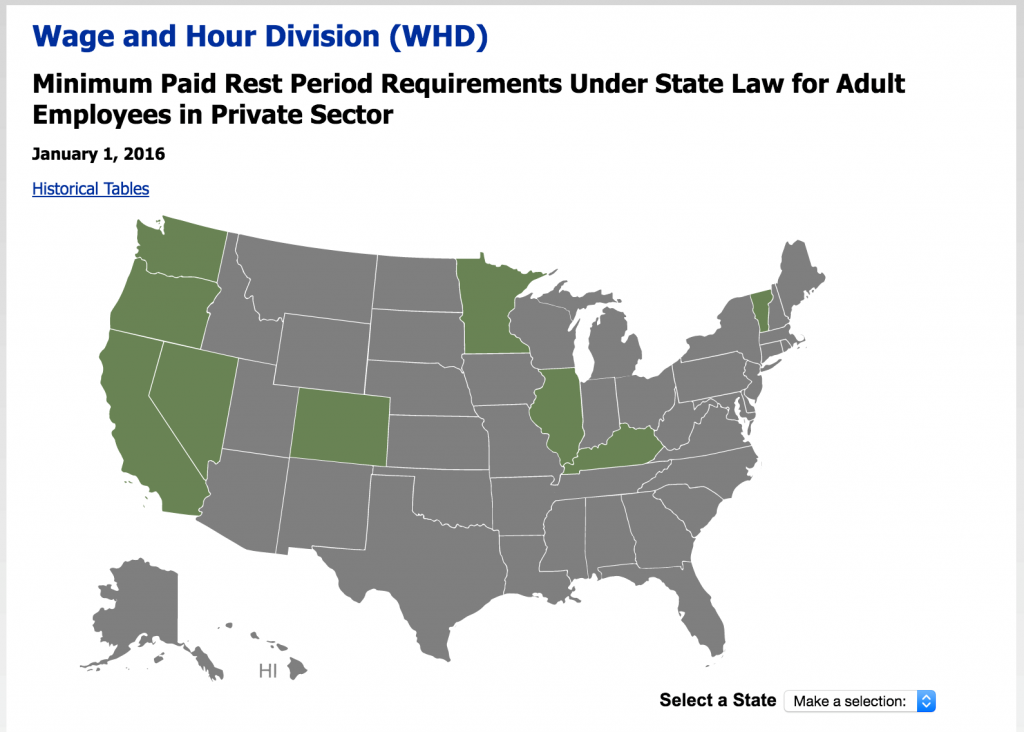
All work and no play makes for… a zombie workforce. It’s pretty much common sense that everyone needs breaks. But what are employee break laws and how can you avoid getting into trouble?
The Definitions of Rest and Meal Breaks
The U.S. Department of Labor (DOL) provides the following definitions (They also like to call them meal or rest periods, but that’s just weird.):
- Rest breaks— 5-20 minutes long and considered paid work time. They are counted as hours worked but do not count toward waiting or on-call time.
- Meal breaks— 30 minutes or longer and not considered paid work time. They also do not include coffee or snack breaks.
- The catch with meal breaks— If an employee is not “complexly relieved from duty” and is required to perform any duties while eating, then they must be paid.
- Strange but true— According to the DOL, “It is not necessary that employees be permitted to go offsite if they are otherwise completely freed from duties during the meal period.”
The definitions of these terms and other forms of compensated and uncompensated time can be found on Fact Sheet #22: Hours Worked Under the Fair Labor Standards Act (FLSA).
What About Bathroom Breaks?
Bathroom breaks are required by the Occupational Safety & Health Administration and are not considered rest breaks. The micromanagement and/or banning of bathroom breaks is generally frowned upon.
The Importance of Employee Breaks
Under federal law, lunch and coffee breaks are not required. (Yep, you read that correctly.) However, if an employer chooses to offer rest breaks, they are considered hours worked and should be paid.
Federal law aside, social norms in our culture dictate that employees usually get meal and rest breaks. Entitlement to these breaks is determined by the employee’s role, exemption status (hourly or salary) and the number of hours worked.
In the absence of a federal mandate, employee break laws have largely been left to individual states.
Employee Break Laws by State
Currently only 20 states, plus Puerto Rico and Guam, have laws for the minimum meal break length for adult employees in the private sector. See an interactive map and full table of meal break requirements, broken down by state.
Source: DOL Wage and Hour Division.
If you can believe it, only 9 states have minimum paid rest break requirements. (Puerto Rico and Guam apparently decided to sit this one out.) See an interactive map and full table of rest break laws for adult employees in the private sector.
Source: DOL Wage and Hour Division.
The Role of the Employer
Employers play a crucial role in shaping workplace culture. In addition to following the laws in the states where you reside, you also need to determine a rest and meal break policy that makes sense for you and your employees. These rules need to be communicated clearly and effectively, allowing for feedback when needed.
 Author: Content guru and marketing co-conspirator at Wagepoint, Michelle Mire is a professional writer with agency and corporate experience who is now diving into payroll with full scuba gear in tow. When away from the keyboard she spends time hiding chocolate from her children and attempting to escape for a morning run (to work off the chocolate).
Author: Content guru and marketing co-conspirator at Wagepoint, Michelle Mire is a professional writer with agency and corporate experience who is now diving into payroll with full scuba gear in tow. When away from the keyboard she spends time hiding chocolate from her children and attempting to escape for a morning run (to work off the chocolate).
















